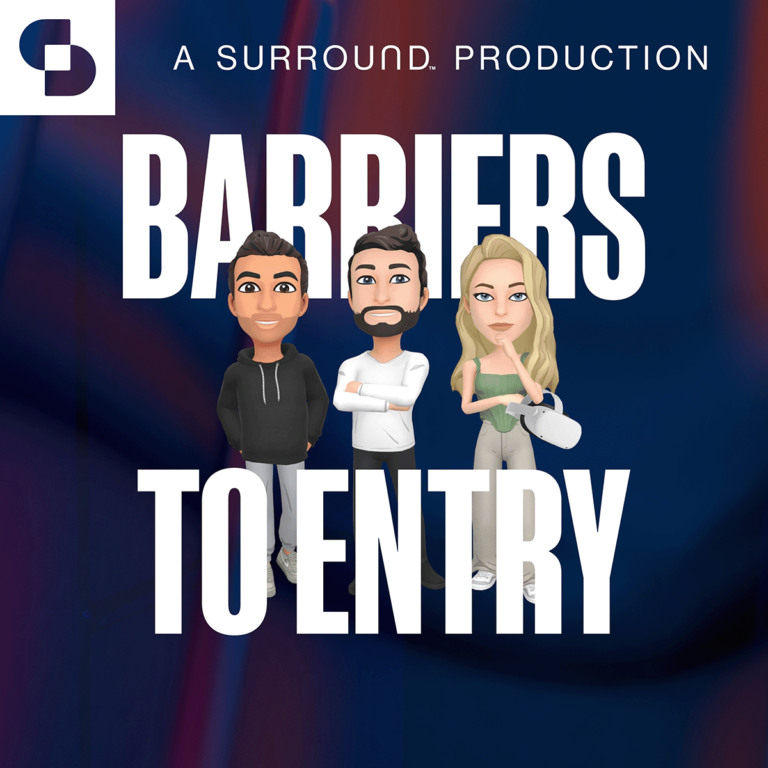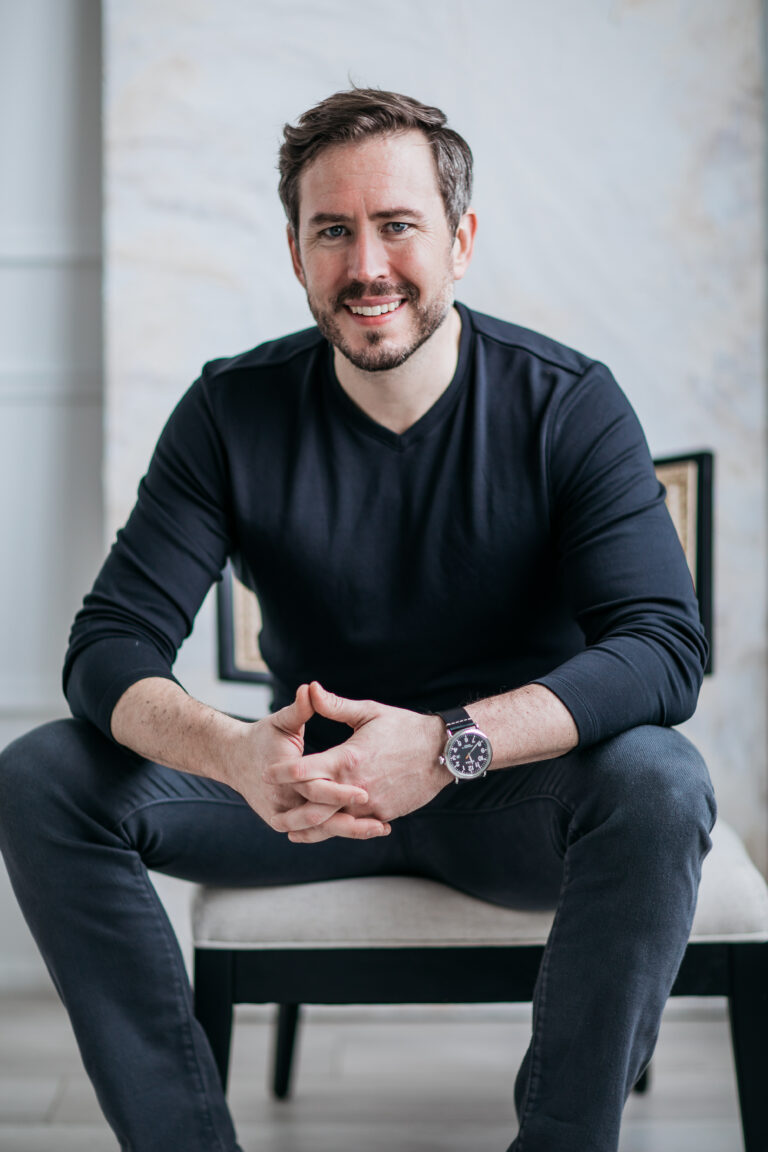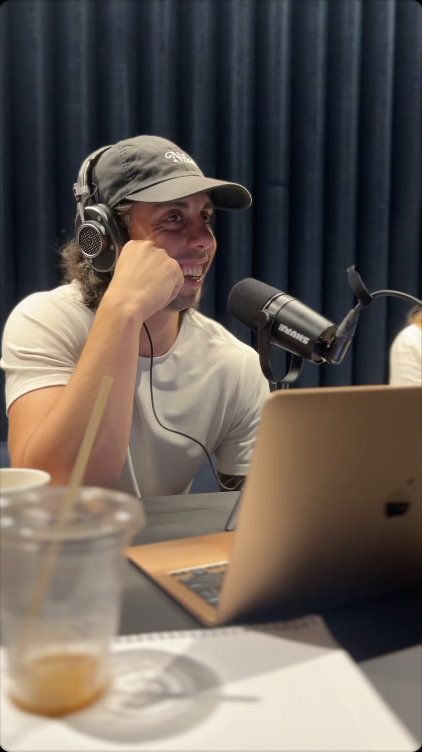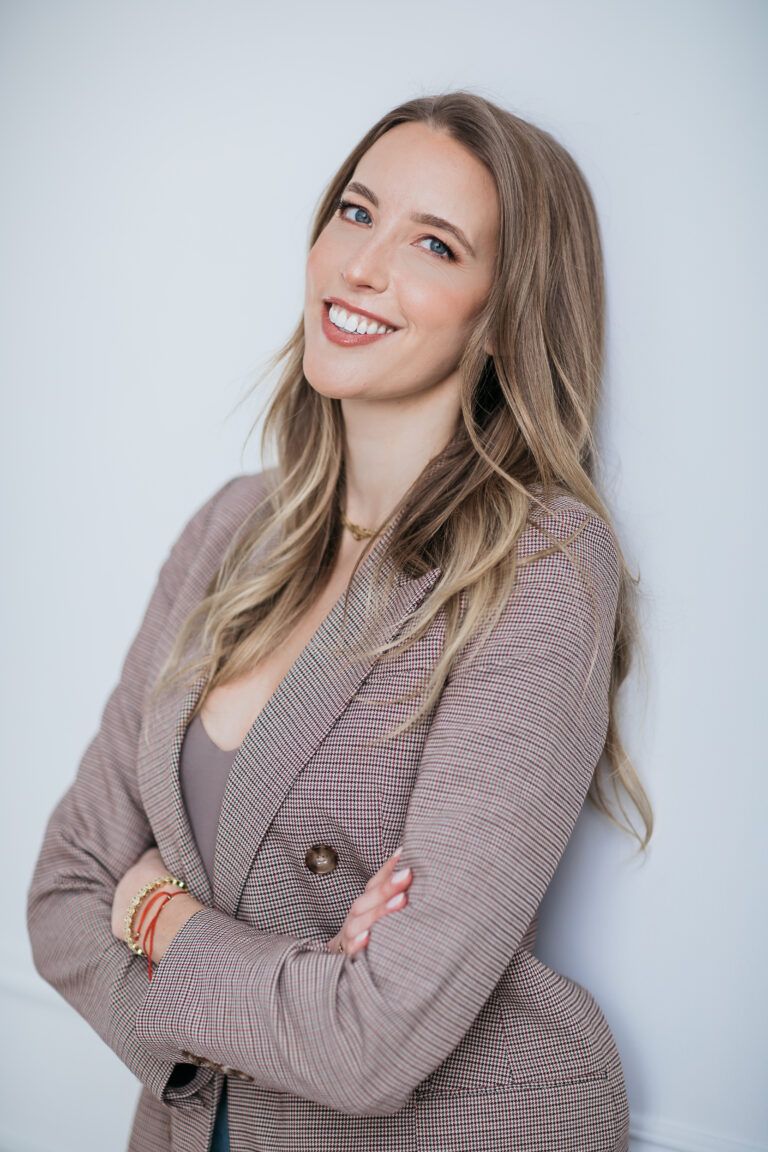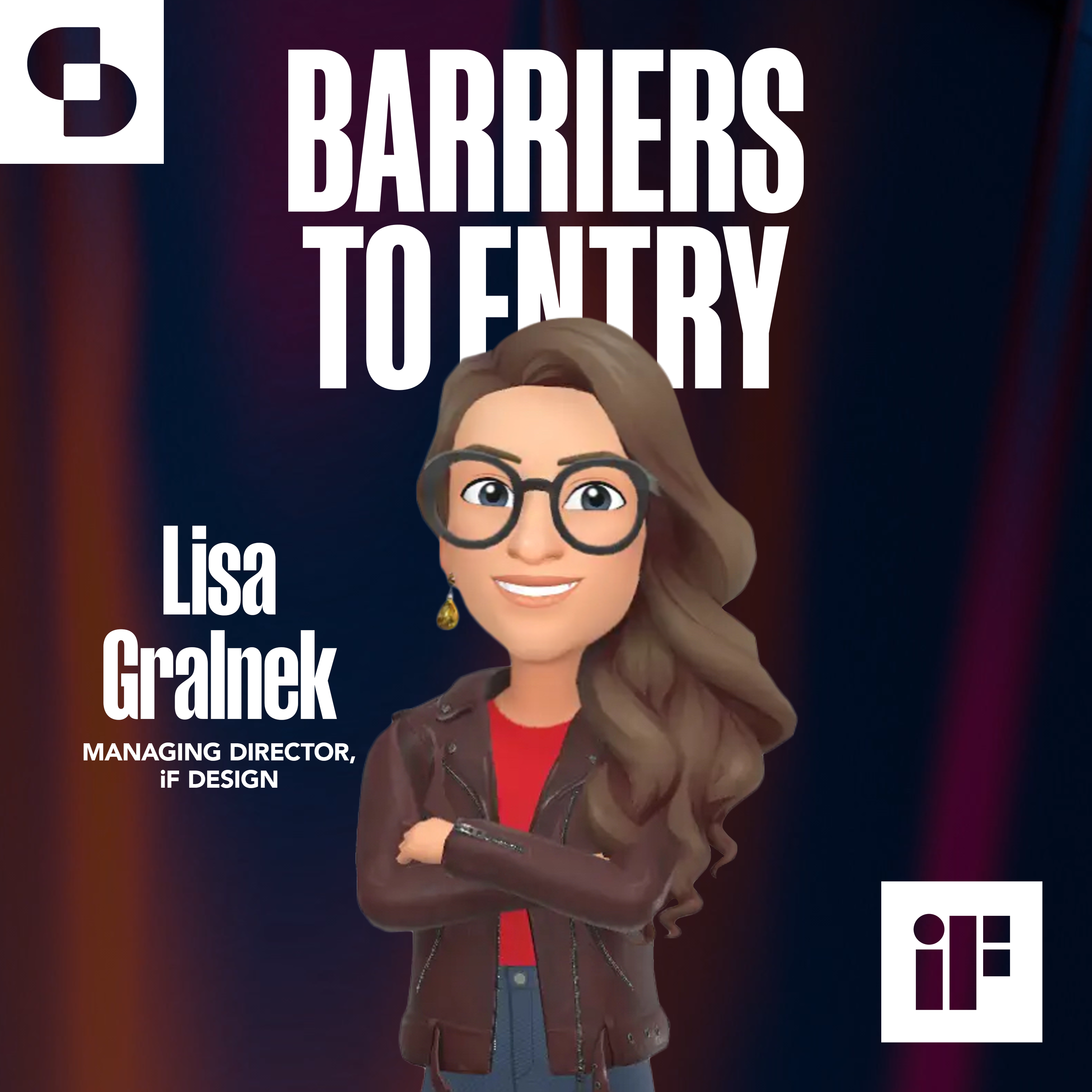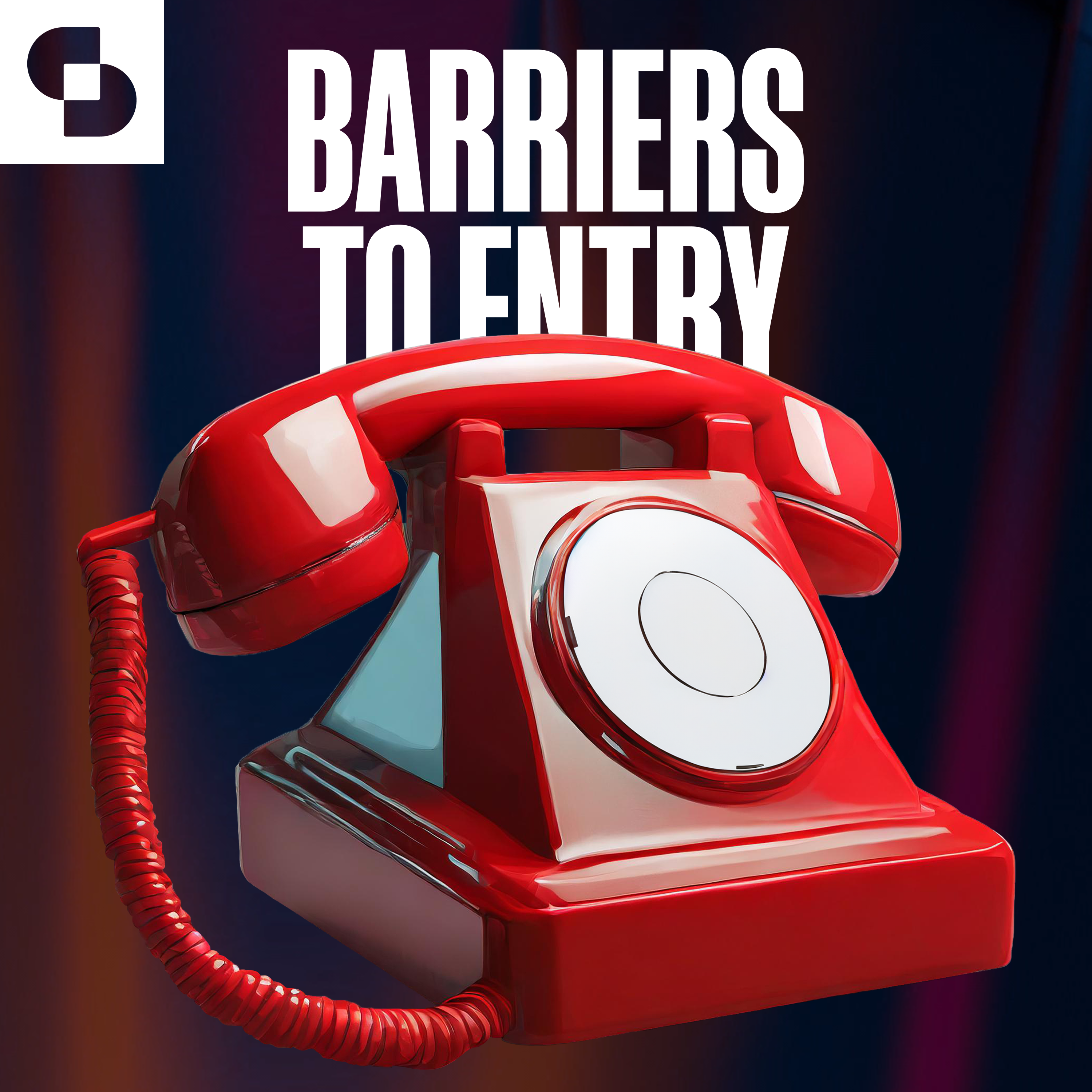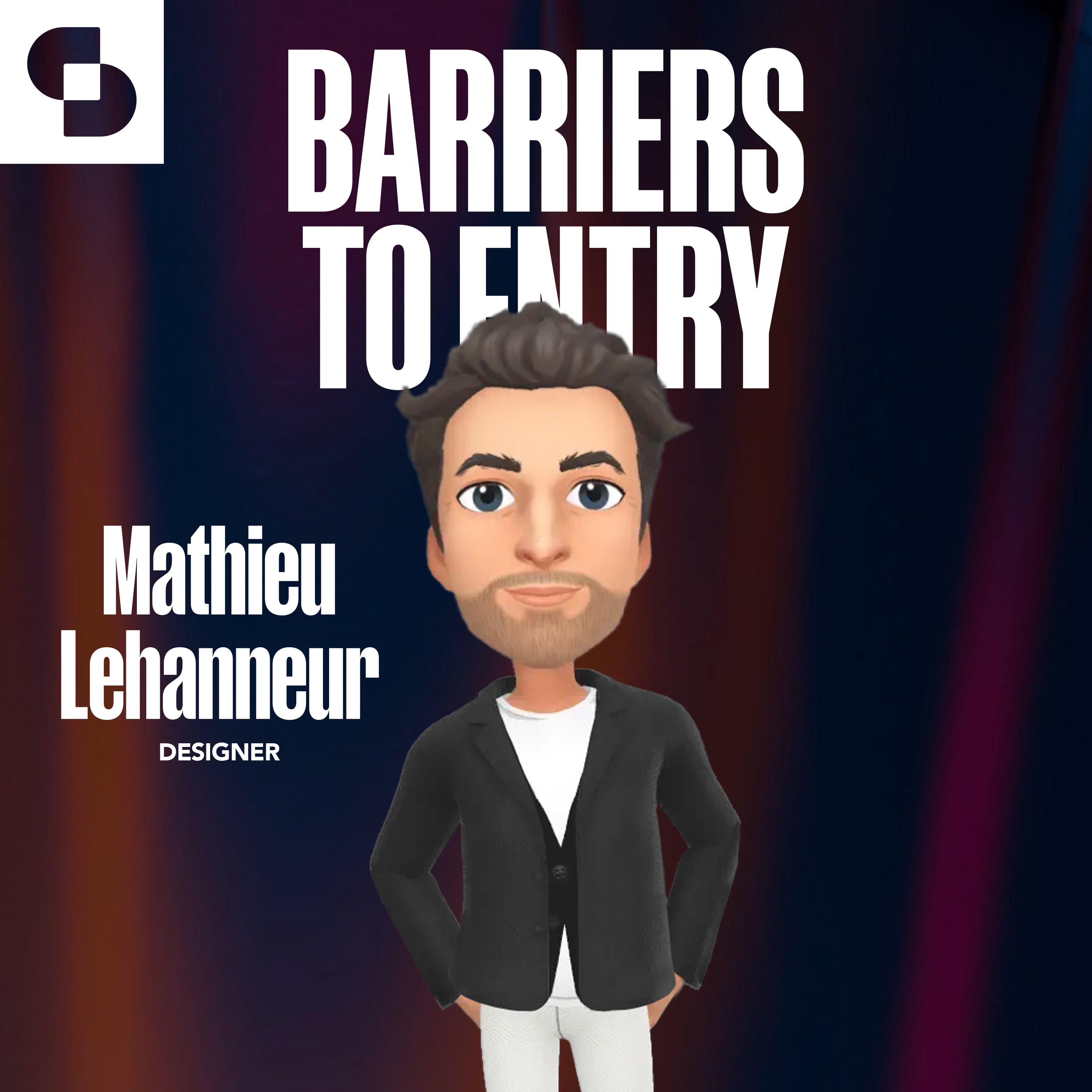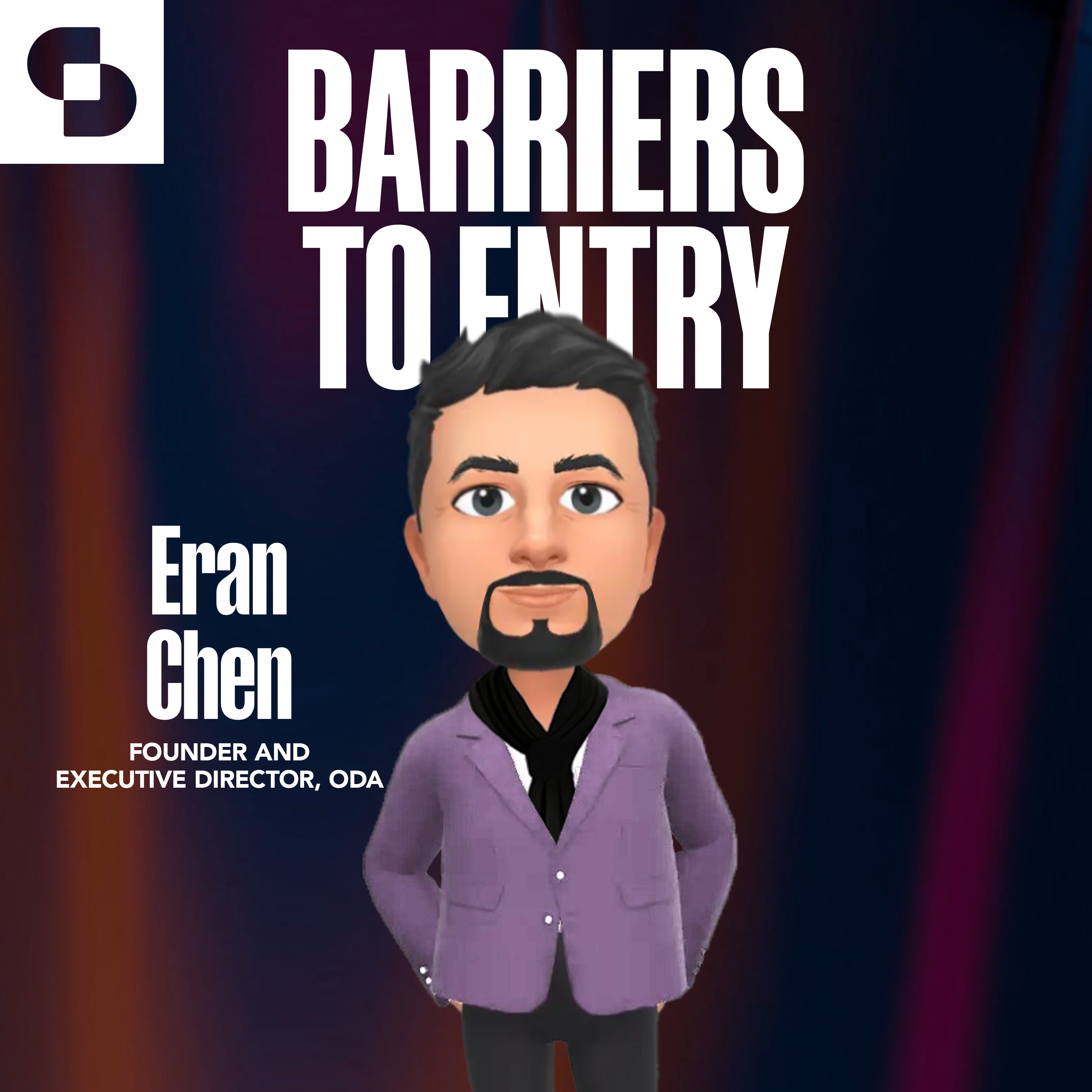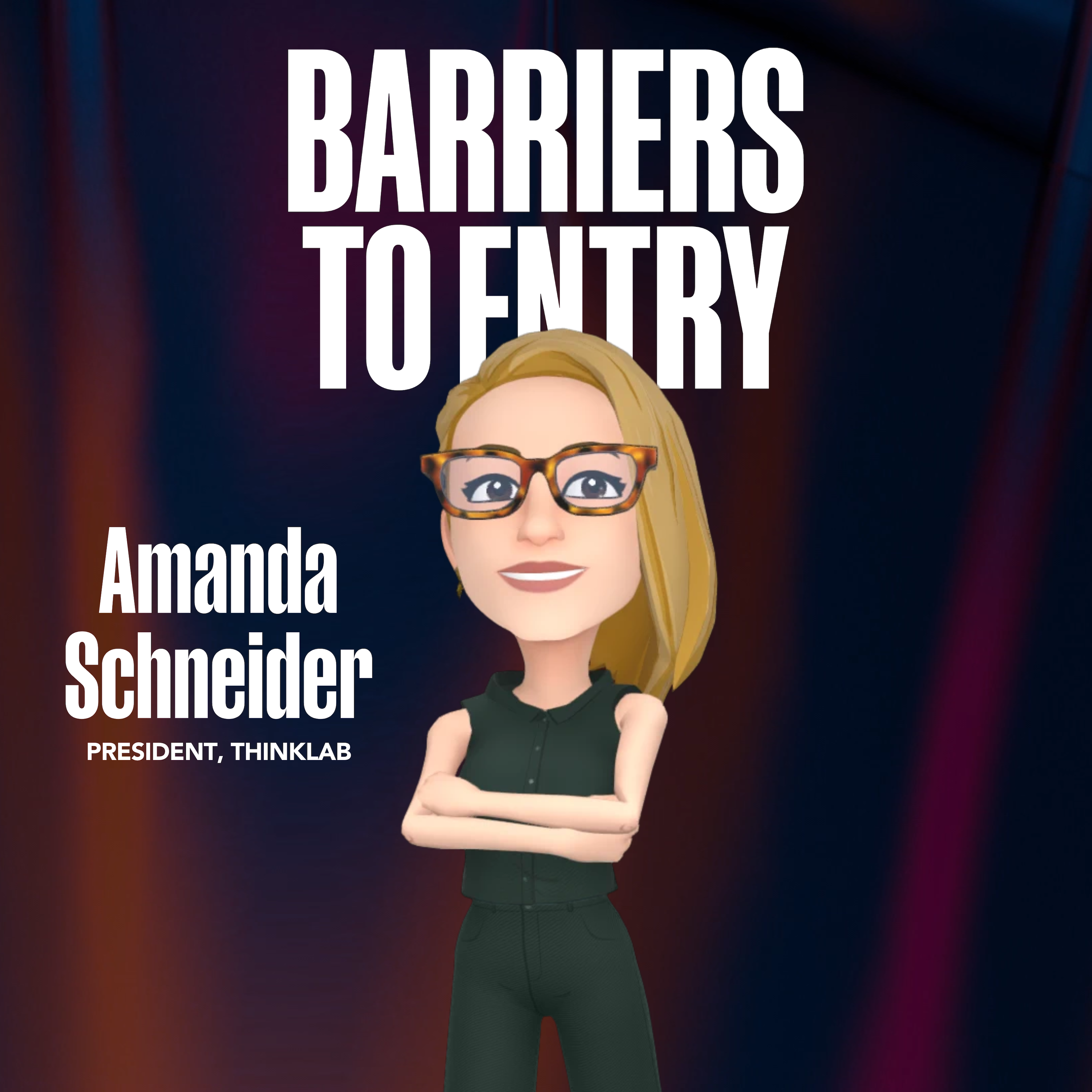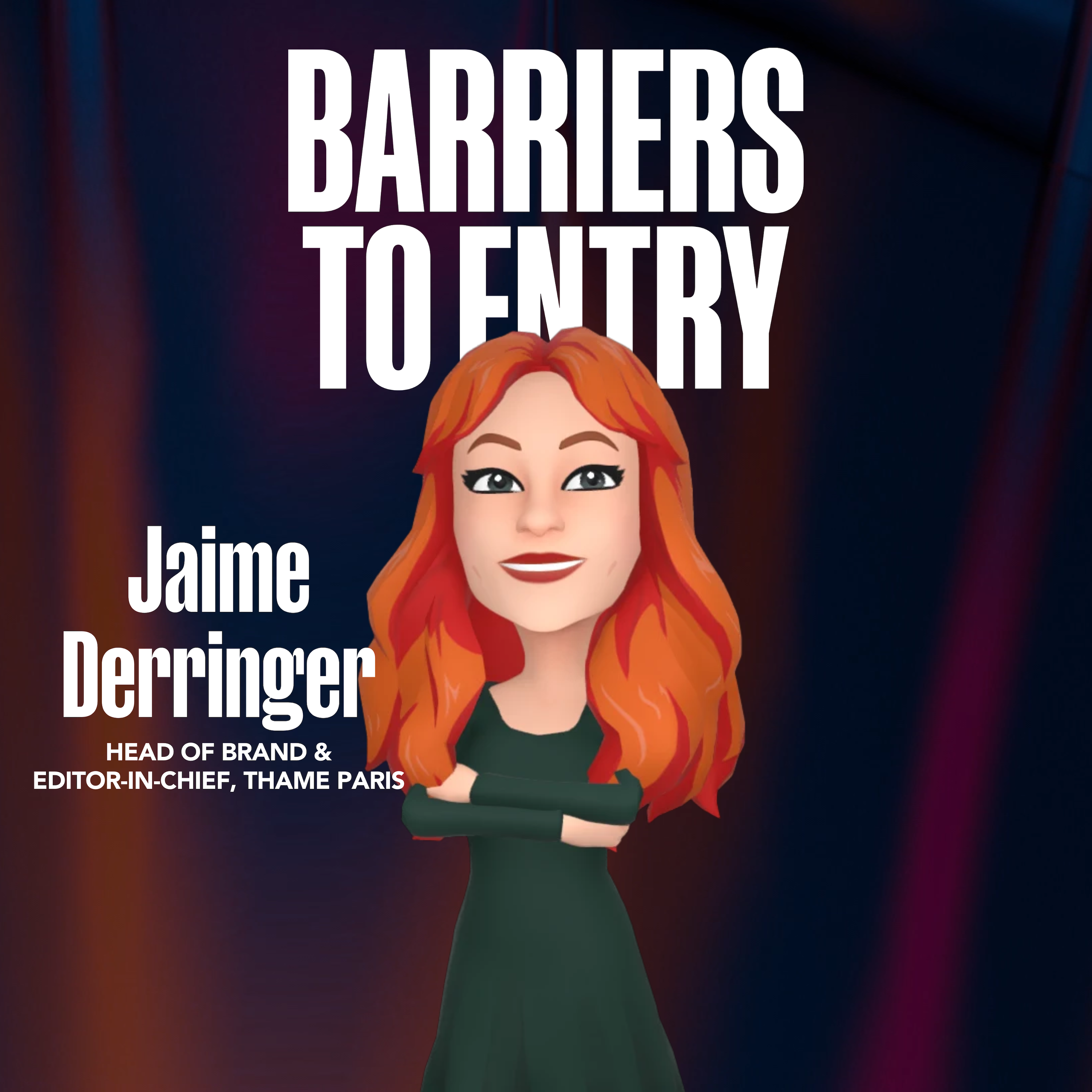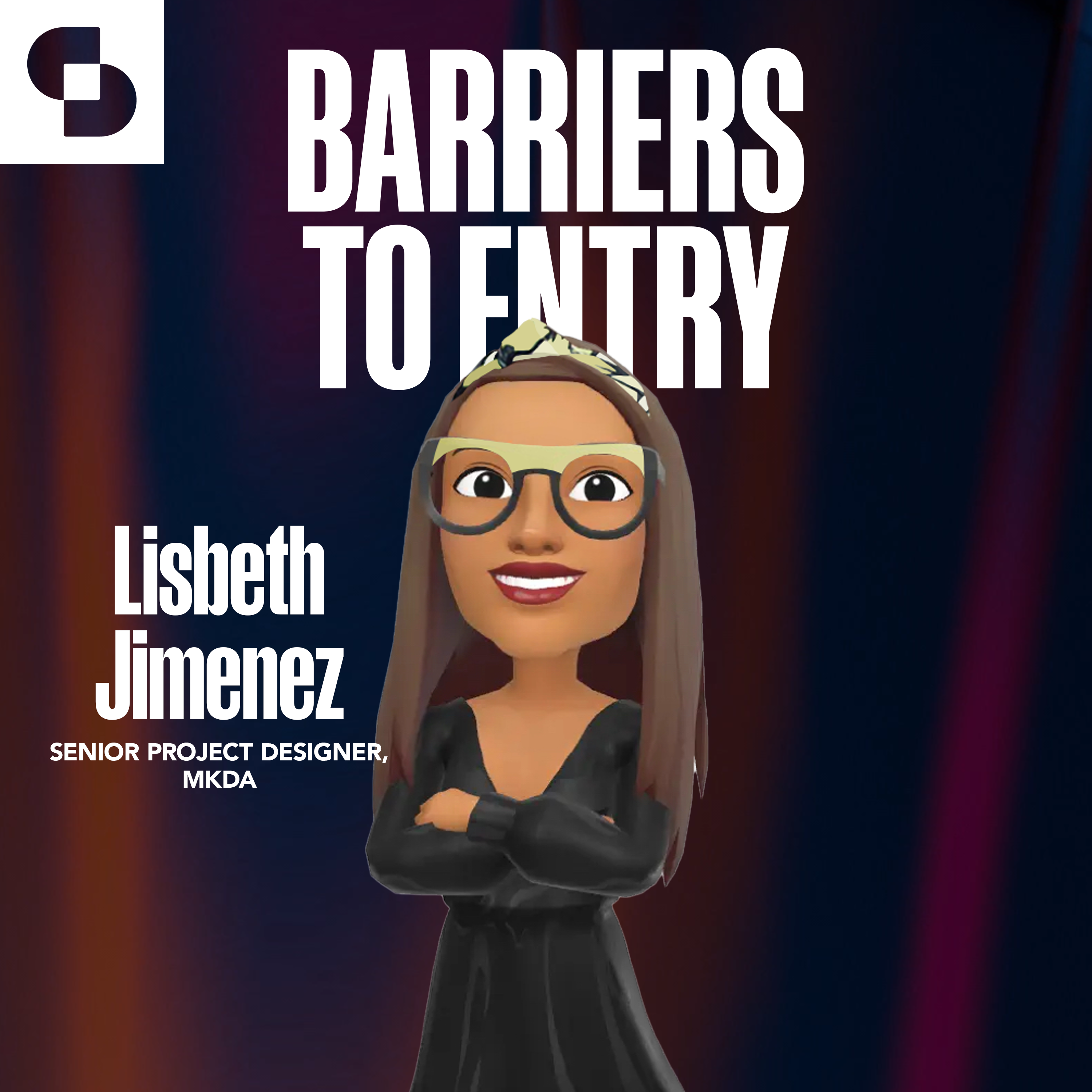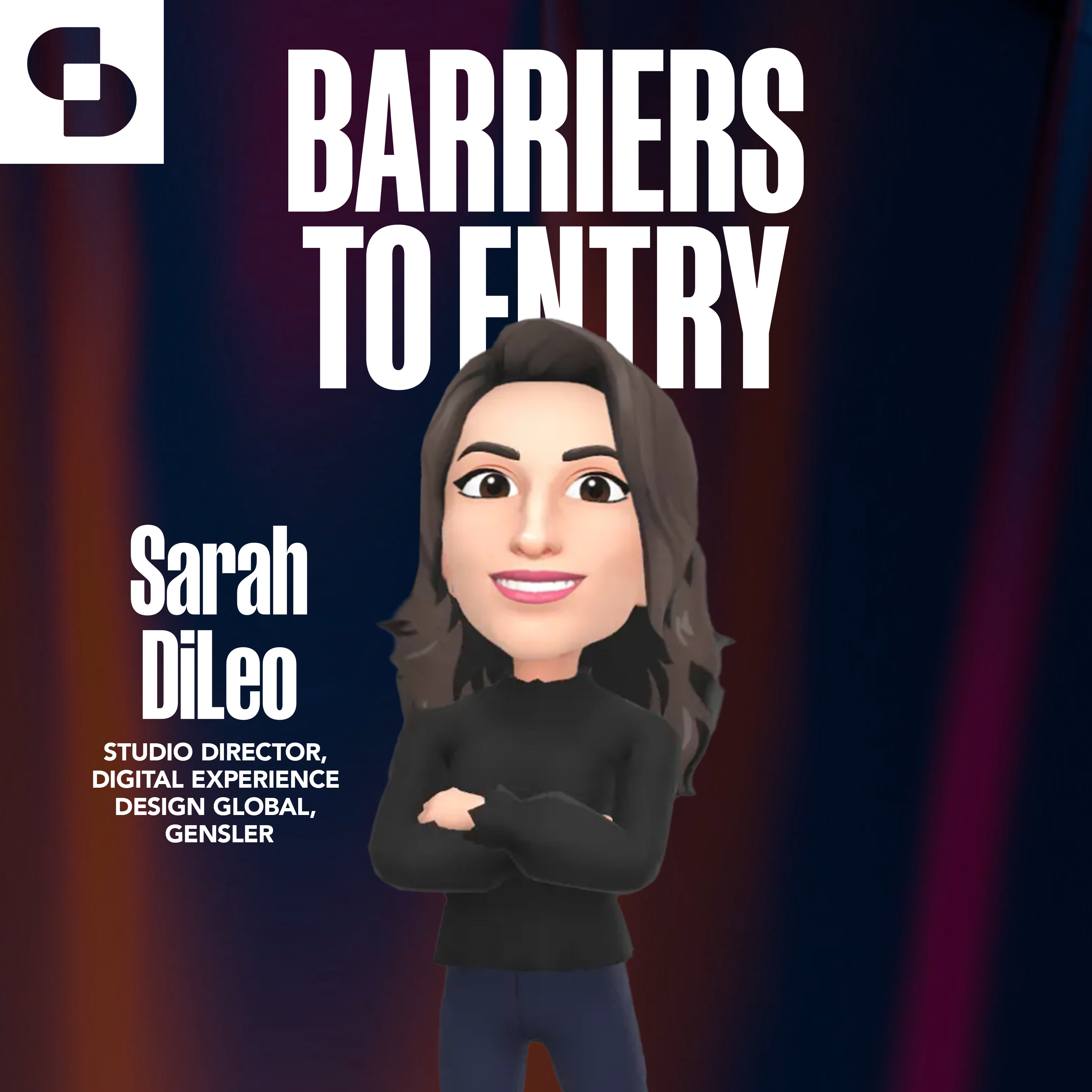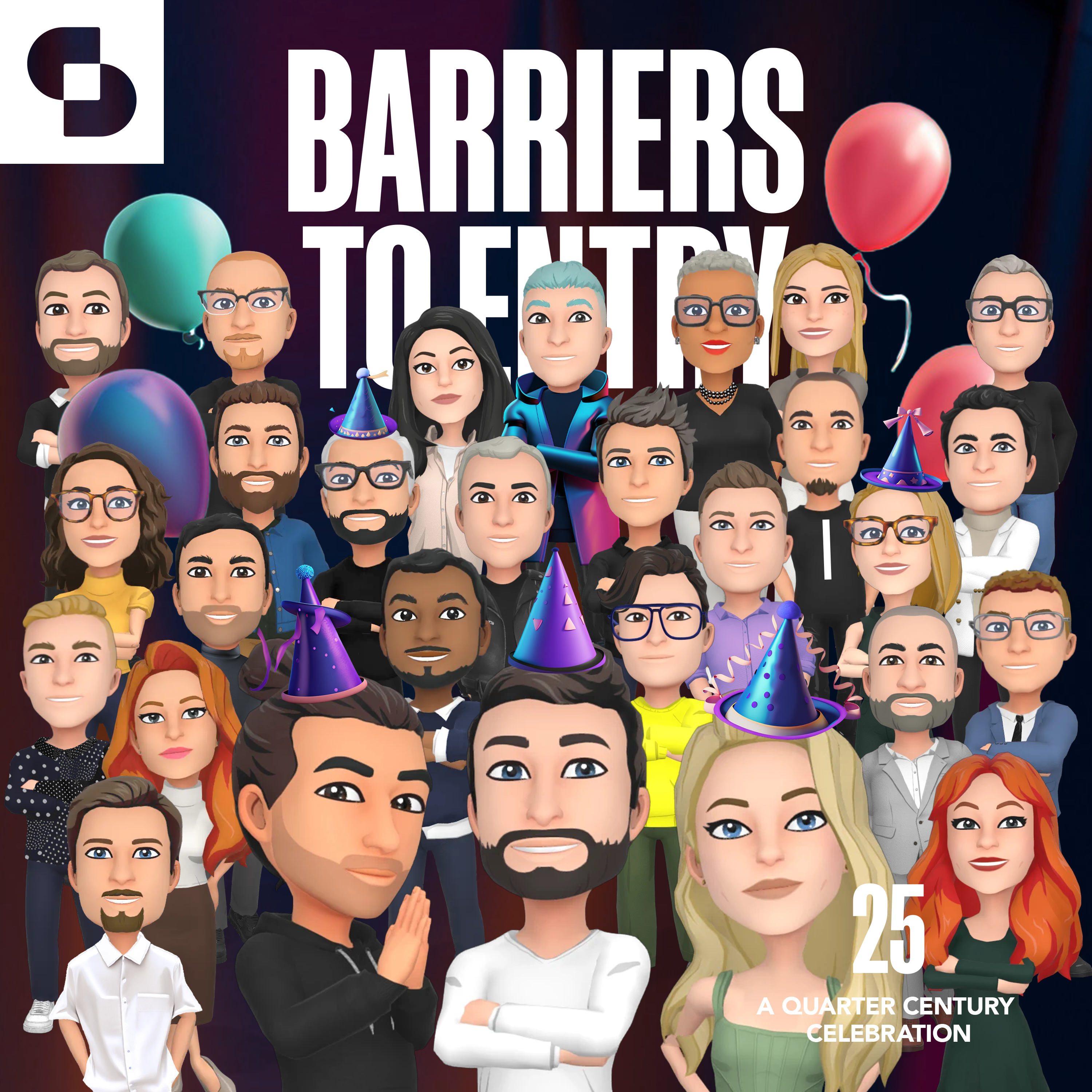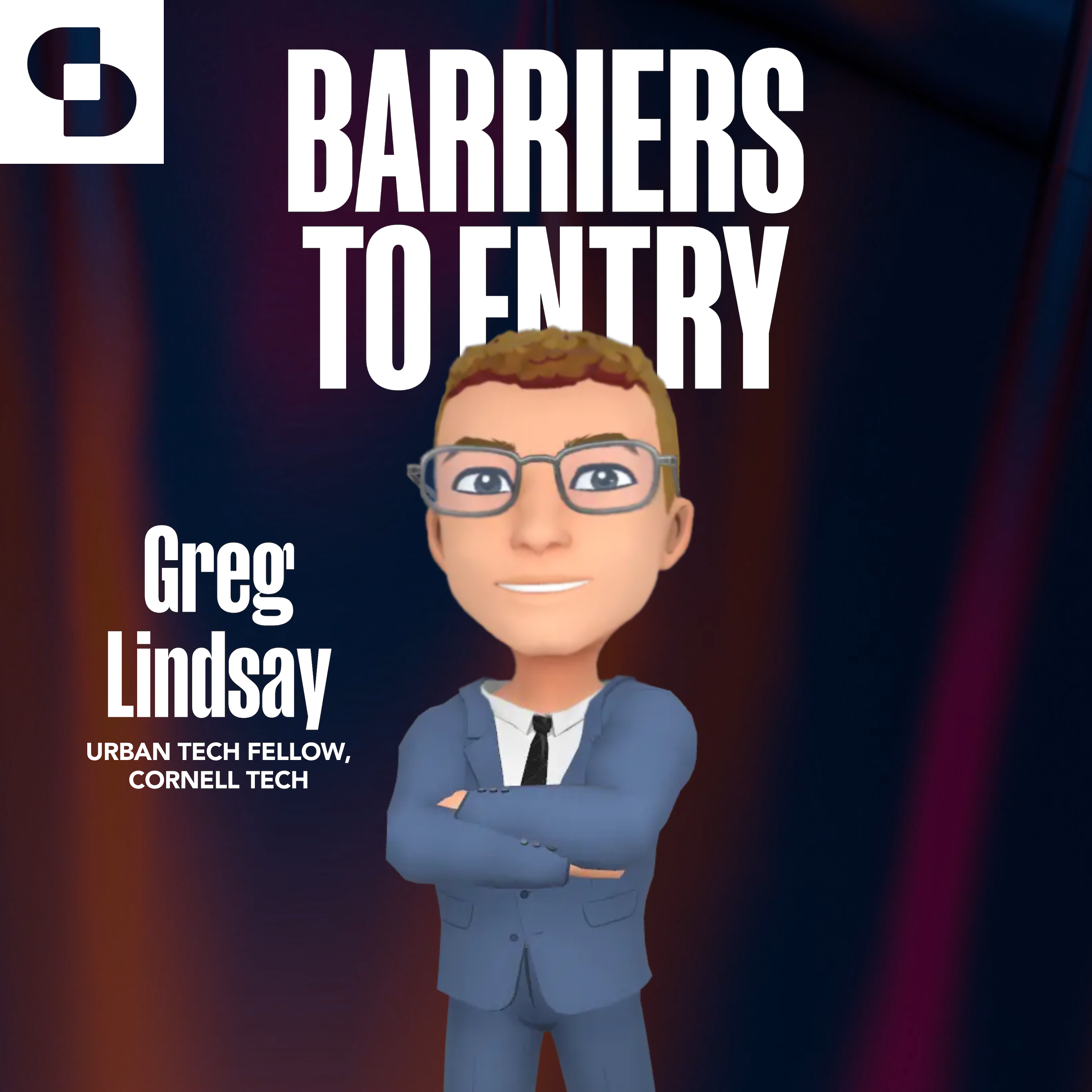The summer of BTE continues as the pod travels to Chicago for Design Week where we sit down with Karli Slocum, the Vice President of Product and Marketing at 3Form, live from the SnapCab podcast studio at NeoCon (is that enough plugs for you??). Kicking off talking about the company’s roots in Utah, Karli shares insights from a number of signature initiatives including her transformative partnership with Interior Design to create the ‘DesignScene’ showroom at the Merchandise Mart at Neocon. She then dives deep into the journey 3Form has been on to build out their MAD Award-nominated virtual showroom for the brand. Much like Salt Lake City in winter, you won’t want to miss this conversation.
Connect with Karli Slocum on LinkedIn!
Moments to check out:
- (5:05) Partnering and prepping for Chicago Design Week
- (11:37) The origins and economies of exploring a digital showroom
- (19:29) Building a vision – and sales strategy – for how digital compliments physical
- (29:12) The future potential of the product
Connect with our hosts on LinkedIn;
References and resources:
Discover more shows from SURROUND at surroundpodcasts.com.
This episode of Barriers to Entry was produced and edited by SANDOW Design Group. Special thanks to the podcast production team: Hannah Viti, Wize Grazette, Kasey Campbell Thompson, Rob Schulte, and Samantha Sager.
Although the transcription is largely accurate it was generated in part by an automated service. In some cases it is incomplete or inaccurate due to inaudible passages or transcription errors.
Karli Slocum: [00:00:00] I’d love for designers to be able to use these tools and save time, not have to re sample and re sample, and then like also be really confident about what they’re specifying at the end of the day because they’ve been able to see it.
Andrew Lane: Welcome to Barriers to Entry, the podcast where every episode we get into it with the leaders, designers, early adopters and influencers who are driving innovation in the architecture and design industry. It’s the metaverse. It’s AI. It’s blockchain. It’s all happening here. And here is actually live from the NeoCon podcast studio powered by Surround and sponsored by our friends at SnapCab. And with me as always is my esteemed co host Bobby Bonett.
Regrettably though, No Tess. No Tess off globally adventuring right now. It’s cozy. In the SnapCab podcast studio here. We’re joined by producer Wize, which is exciting.
Bobby Bonett: In person. We’ve got the whole [00:01:00] SURROUND team in Chicago at Neocon 2023. How nice is that?
Andrew Lane: Most of the rest of the team is obliviously mingling around the
Bobby Bonett: outside.
We’ve got, we’re basically in a fishbowl. Yeah, people can see how the sausage is
Andrew Lane: made. Yeah, yeah, producer Sam Sager. Understanding we’re now
Bobby Bonett: talking about her. But as you mentioned, Neocon podcast studio and it’s the summer of BTE. Yeah, we
Andrew Lane: should have mentioned that right road trip. We’re hot in the middle of the summer of BTE on the Chicago
Bobby Bonett: leg of the tour.
What better way to spend a summer day in Chicago than with Karli Slocum. So Karli is 3form’s vice president of product and marketing. A Sammy award winner given by Utah business to its marketer of the year and a women tech awards honoree by the women tech awards council. I can tell you as someone who has had the opportunity to partner with Karli on a number of programs at Sandow design group, that Karli is an incredible marketing mind.
And as we’ll discuss today, she’s pushing the ball forward as an innovator at 3form as well. So Karli. We’re so happy that you’re able to join us today on our
Karli Slocum: pod. Well, thanks guys. It’s great to be in this fishbowl with [00:02:00] you. I know. I
Bobby Bonett: know. And it’s nice and comfortable, right? What a great little studio that’s comfortable.
It is actually
Andrew Lane: lovely. One of the drawbacks of the audio format is the viewers can’t also be cozy in the fishbowl with us.
Bobby Bonett: Well, if you follow us on Surround Podcast Network, you can see the pod, but Karli, we’re in Chicago, but we want to start out by you pitching us on Utah, which is where 3forms headquartered.
Karli Slocum: Yeah, that is so funny because, honestly, in Utah, we do the anti pitch. So we want people to go to Colorado. We want them to ski elsewhere and to keep our, yeah, we want to keep the lines, yeah, we want to keep the lines moving, but really it is beautiful. The mountains are super close and so, and we’ve had this crazy like population boom over the last 10 years.
So those lines have actually gotten long, but that’s one of the great luxuries of living there. You get to go skiing, hiking, go to waterfalls, see like random lakes up in the mountains. So really, that’s why I ended up there. Are you from Utah originally? No, I’m from Illinois. I actually used to live in Chicago.
Homecoming. Oh, interesting.
Bobby Bonett: Yeah. [00:03:00] So I’m back in Illinois. So you’re NeoCon 2023. Yes,
Karli Slocum: Once a year, then
Bobby Bonett: back to Utah. Yeah. But 3Form’s headquarters are in Salt Lake City. It’s a global brand. You’ve got LightArt, which, is it fair to say, is a sister brand? Can you, like, break down the corporate infrastructure and 3FORM and its partner or affiliate or brands underneath the umbrella?
Karli Slocum: Sure, yeah. So we have 3FORM and then, as a whole, so like LLC, right? And then we have the 3FORM, the company that’s been around for 20 years. And we specialize in translucent recycled materials. So usually it’s resin and glass. And then, and usually like a decorative element in a space. And then we have light art.
And actually light art’s got an interesting story. Ryan Smith, he’s our chief creative officer now for all of the brands. He started up light art. And he was using 3 4 materials in his light fixtures. And so I wasn’t there at the time, but the story goes, essentially, our founder, who’s Tally Goodson, met Ryan at one of the shows and was like, Whoa, this guy’s using our [00:04:00] material.
Let’s like talk to him. And over time, businesses came together. And then we have another brand called 3form Elements. It’s fairly new. It’s just, we actually launched it during the pandemic. So that was fantastic timing. It’s a brand that’s basically focused on FF& E. So products for dealers, a little bit more standard, a little bit away from like the custom approach that it’s normally 3form and it’s like felt and marker boards and products that you can.
quickly specify in a dealer world. So that’s
Bobby Bonett: all three. And Ryan, is it too soon to do like a third plug?
Andrew Lane: It’s, it’s early in the morning, but
Bobby Bonett: it’s never, I just want to point out that Ryan and 3form partnered with sand out design group to build out a really incredible activation within design scene on the 11th floor at the merchandise March.
So it said, thank you to Karli and the three, you’re
Andrew Lane: really hammering the FOMO for the
Bobby Bonett: listeners. I mean, we’re people who are podcast studio powered by surrounds. Sponsored by snapcab with 3form in the booth at the designs at the economy and what
Andrew Lane: none of the things that the listeners can experience other than on at surround podcast network on [00:05:00] instagram and there’s an instagram plug from me for those of you who are not familiar there.
So Karli, we’re going to get into, you know, something really cool and a matter of word honoree product that you’ve been building and continue to build at 3form and we’re excited to talk about that. We were actually talking before the show about This is exactly why we started this podcast is to talk to people who are figuring out how to try these new things in emerging spaces.
And that’s exactly what you’ve been doing. Given we are here, Chicago Design Week, what is it that a brand like 3form does to really prepare to come to Chicago to be a part of an experience like this? What are some of the things that you’ve put in place? And what are the, some of the experiences that you’re hoping to create for people who are visiting your brand while you’re here?
Karli Slocum: I think the biggest thing, and Bobby mentioned this, is our partnership with interior design. And we’re a materials company. So to be able to come in, design out a showroom, but it not necessarily be ours. Right. And be that like decorative element, the color, the pop that brings people in is really where we flourish.
And so we [00:06:00] had a showroom here for, I think, 10 to 15 years prior to me being at 3Form. And then during the pandemic, we were faced with these choices. Right. And we were like, do we renew, do we sign another like long term lease at the Mart, or do we think differently? And it’s come to surface like really three different approaches that we’ve taken that I think makes more sense for us at 3Form for what we do.
One being that we wanted to have more intimate type of relationships with designers. So we’re bringing more designers to our headquarters in Salt Lake City, which is just a natural showroom. But what’s nice is that we make everything by hand, we make it to order. So, when we bring people in, we can show them our products, we can show them how it’s made.
And so we have two different fabrication facilities there. And so we can bring people through, and I think it’s just really cool for them to see how the materials are made, and then just be able to check out Utah, right? Right. So, we can take them up in the mountains and all that. She’s got a little
Andrew Lane: low key plug artist in Karli here as well, trying to keep Utah on the low key, but…
I know,
Karli Slocum: I’m supposed to [00:07:00] be doing the anti pitch. Exactly.
Bobby Bonett: I’m just thinking, how do we get an invite to experience
Karli Slocum: this? You’re on the list, don’t worry. So we want to do more of that, you know, and I think that helps. I mean, there’s so much going on at Neocon that it’s like hard to quantify. Like, is somebody going to remember you when they leave?
And I think it was such an amazing branding experience, right, throughout the years. So now we’re bringing people back to our headquarters. And then also access is a problem, right? So not everyone gets to be here. We’re just talking about FOMO and things like that for some listeners. And so the virtual showroom is meant to do that, right?
It’s meant to give access to people whenever they choose to experience our materials. And then I have a lot of, like, aspirations for it and what we’re building towards. But we wanted to invest in that too because there’s no bounds, right? Like, you’re not bound by real estate. You’re not bound by time.
Like, you can experience it whenever. And then third is, you know, what we’re doing with interior design. Like, I’d love to partner with more manufacturers and be able to provide our materials in their showrooms and have a [00:08:00] presence that way. Because we don’t make furniture, right, and we’re not a carpet, like, it’s something that is a decorative element, so to have our own showroom is great, but it’s really fantastic if you can partner with others and, and show off that
Bobby Bonett: way.
Did that complicate things? I mean, that, you know, going from being able to focus in on Activating a showroom around an event like Neocon to become part event planner, part constant collaborator with other showrooms, part virtual showroom developer. I mean, you’ve really made it incumbent upon you and your marketing organization to become a utility player ultimately.
Karli Slocum: Yeah. I mean, I think it’s just priorities, right? And I think for us, well, it’s really helpful to have Ryan on board. He’s got a lot of energy and he’s got a great, relationships. Yeah. So that helps. He’s got a great design vision. And so just even being here is an opportunity to meet people though, you know, and to network and to see what other people’s and other manufacturers, what they want to do, right?
And a lot of people have. Interest in collaboration. Mm-hmm. , and it makes a lot more sense for our customers if [00:09:00] they can come in and they can see all these various different materials coming together in furniture. It makes their job easier, right. Than seeing sort of all these independent silos. So I’d love for the entire industry to be thinking about that.
Right. And meeting our customer where they need to be as opposed to being that siloed experience that then they have to like, Take the time to piece it together, you know? So I think we’re just at the forefront with interior design, but I’d love to see what we can do and do more of that approach. Yeah.
How
Bobby Bonett: much freedom do you have to partner with other manufacturers now versus five years ago? I
Karli Slocum: mean, as far as Neocon goes
Bobby Bonett: or Neocon or generally speaking, we were having a conversation at lunch a couple of days ago, and the topic was sustainability as opposed to virtual showrooms or the metaverse or emerging technologies.
But the conversation came up in the same respects, which is. Designers are looking for solutions or as marketers were trying to think about new and innovative ways to market our brand and partnerships could be a nice way there to talk about brand and maybe we wouldn’t have thought about that five years ago.
So are you given more leeway now to look for interesting [00:10:00] ways to work with other brands to talk about 3form its products solutions now than you were a few years ago or or have you always had that luxury?
Karli Slocum: I mean, I think we had talked about I think what actually changed things was. Pandemic, having to make hard choices and just wanting to think differently.
And I think others are thinking differently too. And so I think it’s more just like logistics and having the right contact at the right time. So it’s more trying to figure that out. I think for a 3form, our materials are essentially, you can do anything with them, right? So it does not, which is both good and bad probably.
But like. Designers can essentially take our material and transform it into anything. And so I think ultimately, it’s really helpful when we can come to the table and say, Hey, listen, we’ll provide you the materials, but you have like, this ability to transform it into anything you want. So it really showcases your showroom.
And it’s not necessarily all about 3 form, but when somebody points it out, it’s like, Oh yeah, that’s 3 form, you know? So, from a marketing standpoint, to be just be peppered around in different showrooms, I mean, I love that. [00:11:00] And we have, we aren’t quite there, right? But I think we’re starting to make some good connections to figure out what that could look like.
And you’re not bound
Bobby Bonett: to a showroom. You can spend Monday walking around the merchandise mart. You can spend Tuesday walking around another district and kind of feel out. What’s happening from an innovation standpoint, a marketing
Karli Slocum: standpoint. Yeah, absolutely. Yeah, which has been a great experience this year compared to other years.
And, and, you know, we may want to have a showroom again at some point, right? And, and I look at the virtual showroom the same, like I’d like to collaborate with people and put in, you know, furniture and. You know, different textiles and things like that from other manufacturers. Like there’s no reason to not do that from my perspective, you know.
Andrew Lane: Let’s hit on that a little bit because I mean you also talked about access and like, you know, not being limited by physical. I think it’s really great what you’re doing and we’ll get into it a little bit more deeply but what was the kickoff to starting to explore that a little bit more? Did the pandemic accelerate that at all?
Did the end of your lease have anything to do with it? What were some of the factors that led you to start to go down this road of having this digital pathway for people to [00:12:00] experience your brand?
Karli Slocum: It means all those factors, right? And I think we all had to make tough choices at the time and we were facing signing a long term lease and we just weren’t sure, like, are we going to survive through this pandemic?
Like there are a lot of. Um, open questions. And so I think it accelerated some of these ideas. I think that we were toying around with them because we have this natural showroom in Salt Lake City. And for us having a showroom That’s, that’s Utah plug number four,
Bobby Bonett: by the end of this
Karli Slocum: episode. So it made sense to bring people out there. And then we spent a lot of money on our showroom here and we only really used it like three to four days a year. We do have sales reps here and so they would use the space occasionally. But when you look at the whole like ROI of the spend, I think we have a fairly well known brand, but we’re a small organization, you know, so we don’t have just like these.
Huge budget. So you have to kind of make these decisions and there’s, every time I walk through I’m, you’re like, maybe we still should still have a showroom, you know, that’s dedicated. But then I see the [00:13:00] interior design space, I’m like, well that is even better than if we’d had our own showroom. So, um, I don’t think anything is off the table, but I do think the pandemic sort of accelerated some of that thinking, which I actually kind of love the fact that in hindsight it’s easier to say like, kind of glad that it happened.
Cuz I think it challenges you, right? And you have to think differently and you have to like, It’s like, move faster to think about how do you represent yourselves and think about investing in the future versus just keep doing the same old thing, you know, so.
Andrew Lane: So let’s get a little bit explicit because we’ve sort of danced around what it is that you actually.
Come on. It’s a PG podcast. It’s 10 in the morning. It’s 10 in the morning. We’ve got the producers watching us to make sure that I’m keeping things clean, but let’s call out exactly what it is that you built just for the listeners so that they know what we’re talking about. Obviously we’ll put this in the show notes as well, but can you talk about what the experience is that you guys have created?
And I’d love to start out by saying, and what is it? And then what was it that got you started? Like what was your MVP? [00:14:00] What was your initial, this is what we need to build and why?
Karli Slocum: Yeah. So it actually began with a partnership we have at the company called Mayo Studios out of New York. And we discovered them a few years back because we were looking at how do we get really great renderings of our products.
And we work with translucent materials, and there is so many Is that easy? No, it’s so difficult, and then it’s compounded by the fact that we sandwich Weird things in our materials. So everything from like leaves to textiles to branches I mean, it’s just like it’s a little bit of everything. So you’re dealing with translucency and opacity, right?
And there’s times where the panel is super opaque and there’s times where parts of it are opaque and parts are completely translucent So you can’t just come up with some, like, algorithm that’s just gonna make it work, right? Like, you could, something that’s completely opaque. So, Mayo Studios was fantastic.
They, we worked with them, they figured out how to put our materials into more lifelike [00:15:00] rendering, so you could see how light plays with it, the shadows it creates, and that partnership actually kicked off the, even the ability to build out this virtual showroom. Because they knew and understood our materials by that point.
And so they were all also looking at moving more into that space and they were toying around and the article you mentioned, the MAD Awards, they also had a project in there called the mansion,
Andrew Lane: which is, yeah, they’re homegrown, their own
Karli Slocum: product. And they showed me that and it just like, okay, hook, line and sinker.
Right. I was like, Oh, this is amazing. So that was our inspiration, but we started with building out what we call the hub. And that is sort of a museum like experience where you can come in and you can learn more about our materials. You can quickly go on and order samples so you can feel it, right? We know that part’s really important still.
And then what we wanted to do was take sort of that abstract experience and build actual spaces so you could see how to translate those materials into true, normal, everyday applications. Healthcare is a big part of our business, so we started with a healthcare building. I think looking back, [00:16:00] there’s now new things I would do with that healthcare space.
But, so we were able to really show that when you go into that space, all the different things that 3Form could do that you may not realize that it’s 3Form. And right now we’re building out a hospitality space, and what’s been fun about that one is that it’s very big, it’s very grand. Because again, you’re not confined by like normal real estate.
And so I’m super excited to get that one launched. We’re actually putting some final touches on the bar area because that’s like obviously extremely important. Of course, of course. And so that actually Virtual
Andrew Lane: drinks are
Bobby Bonett: so key
Karli Slocum: for people, right? Yeah, we gotta figure that one out, like how do you get drinks virtually, but
Andrew Lane: You can start to blur the visualization maybe a little bit after they’ve spent a little too much time at the bar.
Karli Slocum: Maybe we ship a little bottle of booze along with samples. There you go. Have that arrive at the door. But anyway, so we’re finalizing that. That should be live before this episode, um, is live, so.
Andrew Lane: Another BTE exclusive launch.
Karli Slocum: There you go. Yeah, there you go. So, and the goal is that we can build out these buildings and we’ve got exteriors that we want to do.[00:17:00]
And so. Just an opportunity to keep building that. But I think beyond that, I would love for it to be more of a meeting space, you know, where you can come in, like a rep can come in with a customer, they can kind of tour it. I think it would be amazing if they could actually swap out materials live. And maybe there’s people doing that all at the same time without messing up each other’s experiences.
And so I’m, I’m not, like I mentioned to you guys, I’m not the technical person. So I’m always like, is this going to, can we do this one day? Cause like, I really want to do this. Is it, can we do this
Bobby Bonett: or we are going to do this? It’s
Karli Slocum: like, well, can you figure it out?
Andrew Lane: Yeah. So, well, and I think that’s a really important consideration for people too.
And maybe you can talk a little bit about that because, you know, we, we talked about this before the pod, you want to build stuff that you’re not going to have to tear down and rebuild. So even though you are in an experimentation mode here. You are thinking practically about your investment and thinking about how you, everything that you build can be
Karli Slocum: added upon.
Yeah. And I think the thing I failed to mention is sustainability is a big part of our brand too. And so there’s a couple of different projects working on simultaneously. So one is [00:18:00] visualization on our website. So again, the translucent panels have been a little bit of a nightmare, but we’re really at a point where we’re rolling out visualization for different hardware and showing all of our different materials in that.
And that helps because. And if it, from a designer, if you’re just seeing like a four by four, like sample or an eight by eight, it’s hard to see what it’s like at full scale and maybe then try different hardware finishes. So that’s one aspect. And then pair that with, with the virtual showroom to be able to see, okay, now you took this material and now you’re showing a privacy partitions within a healthcare system or a headwall and things like that.
But ultimately what I’d love to do from a business standpoint. is make it so that a designer can save time, that they’re not having to re sample and re sample, and then not having these samples go in a landfill somewhere. And we’ve instituted like take back programs where we can take samples and our product back.
It’s a whole circularity program that we put in place to make new [00:19:00] panels out of them. But the reality is, is we don’t get a lot of that stuff back at this point. So, I’d love for designers to be able to use these tools and save time, not have to re sample and re sample, and then like, also be really confident about what they’re specifying at the end of the day, because they’ve been able to see it.
And they see how light is going to transmit through it, how they’re going to see like, how color will be affected by different lighting, all that stuff that, you know, in different spaces, it can look very different, right? So, Giving them that opportunity to do that.
Bobby Bonett: And, uh, you’re developing a system here, right, between physical and virtual.
Ultimately, how do you envision these two worlds playing with one another? Um,
Andrew Lane: the interplay between Utah and the Metaverse,
Bobby Bonett: Utah and . Wow. Oh my goodness. I think I just got chills. And where are you at right now in that interplay and, and where do you kind of envision that going in the long
Karli Slocum: term? Yeah, I mean, we’re just at the very beginning, you know, so I think we, we always start with, uh, MVPs, so minimal viable product, try to do kind of bare minimum, but that also still has value to an [00:20:00] end user and then understanding where they’re at and like what features that we want to add.
And so I have. aspirations and dreams. But the reality is, is I think we’ll learn from our customers and from our users, and it may end up being something very different, you know, and, and some of it’s bound by technology. Some of it’s bound by what people want to do in real life versus in a virtual world, but we get a lot of data from like think lab and we’re looking at, there we go.
See, I have gotten some good feedback from Amanda Schneider. So, The, um, uh, and actually she’s, she’s one that I talked to that actually pushed me to think bigger too. So I love talking to people like Amanda, you know, Ryan on our team, um, and listening to what could be big and then thinking about the sort of more of a roadmap to get there.
But I think what we hear from that research is that designers still really want to have those personal relationships. But, um, they also want to self serve. So I want to, I’m trying to kind of stitch [00:21:00] those together, right? So being able to do everything they want to do quickly, timely, in a self service kind of fashion, but then have that personal relationship with their rep.
So if it’s something gets more complicated or if they need a quick question answered, they can do that. But again, it’s just in this like. Let’s meet our customer where they are and how they want to work versus sort of forcing them down like a path that’s just complicated and, you know, going to take too much time and energy.
Yeah. So
Bobby Bonett: I want to talk about that sales component for a second because earlier when you were chatting about when you had a permanent space, a permanent physical space, you mentioned ROI specifically. And as marketers, we know at some point ROI comes up every dollar you spend, you know, you want to translate that into sales in some capacity.
And so I’m curious where you’re seeing adoption on the sales side. Um, the virtual showroom as an enablement tool for your sales team and whether you’ve seen any, you know, significant wins yet driven by the virtual showroom or if we’re just still building foundation and if you’re and you’re really just trying to [00:22:00] drive adoption
Karli Slocum: right now.
Yeah, I think it really is more just trying to drive adoption, but I do have and I think every sales team and actually any group of people you have early adopters and you have those that resist change. And with our sales team, those that have embraced it, I really love to touch point with them to find out how they’re using it, what’s working, what they would like to see.
And it’s great to hear how they’ll get on like a zoom call and they’ll, you know, show them the virtual showroom. They’ll show like those common applications. Which otherwise they would have to do that in a presentation, right? So if you can walk through a space of somebody, yeah, the PowerPoint, but then you know We have reps that haven’t really used it and the way I look at us is fine because they’re performing They’re doing things the way that they’ve done them for a long time.
They have great relationships and And my goal is not to change that, but it is more like talking to those that are using it, understanding where they’re going, building things out, getting feedback, and then just keep iterating. And I think it’s more of a long term play, honestly. And I think that one of the things that [00:23:00] I think about is that if we don’t start today, And let’s say we start in five years.
Well, that’s like five years that we’ve missed of learning and being able to sort of iterate and have something it’s really hard to catch up when technology moves so fast. Right. And so I just don’t want to be. Five years from today and not having the right platforms and having to start from scratch.
Andrew
Bobby Bonett: and I were talking about that earlier today. There was a post on LinkedIn by one of ThinkLab’s Virtual you’re at, we’re at the NeoCon podcast studio by the way. Mm-hmm. Which was a listing of a number of the virtual showrooms at the Merchandise Mart, and it was exciting for me to see a list of virtual showrooms.
But still, the list was 8, 8 or 9 virtual
Andrew Lane: showrooms. And it was validating for me because I actually predicted that on the Neo Conversations podcast. Also on the Surround Podcast
Bobby Bonett: Network. But at this point, you know, you have to have a stake in the ground. I mean, the longer you wait to experiment here, you’re just playing further from behind.
If we’re to like… Draw a silly comparison. It’s the same conversation, you know, we have with [00:24:00] manufacturing partners who are wanting to supercharge their growth on Instagram in 2023. It’s like, it’s kind of too late at this point, like you’re not going to get a million followers tomorrow. You got to kind of just, you got to experiment with something.
You got to start somewhere and an MVP product, and then figuring out how you grow from there is crucial. I
Andrew Lane: think that it’s really cool to hear your, your playbook as well. I mean, that’s something that we do a lot at digby is help people to sort of navigate. How that happens and how you grow a product, how you think about the features.
And really a lot of that, even though it is technology comes back to just talking to the users, talking to the customers, you know, getting that feedback and then using that to create your action plan. And I think that sometimes people are a bit daunted by technology and they forget the fact that it still operates the way that anything else in your business would, where you need to understand how the users are dealing with it, you know, that would be a part of any sales process.
So I really love that. That’s the way you’ve approached it. I’m curious if you found that, you know, that uptake is more at a personality level within your sales team, or is it also combined a bit with function? Like people who are in territories where they might not have [00:25:00] access to the showroom in Utah or other.
So it’s a physical world tools. Are you finding there’s more uptake when proximity to the actual physical is a consideration, or is that a part of the strategy?
Karli Slocum: I think it’s a couple of different things. I think one is the biggest is probably those that have larger territories that can’t travel and see everybody in necessarily the most timely fashion.
And then we also have a new group of remote sales consultants. So it’s another pilot we have going on right now. And one of the things that we were trying to address is. Just from a budget perspective, let’s say you kind of figure out, well, in an area, you really need one and a half reps. You can’t hire one and a half people.
It doesn’t really work that way, right? So what we’ve looked at is, okay, we’ll have one person in that territory on the ground, like going to visit libraries, going to visit designers, but then having a virtual sales rep that is then also covering that territory. So So, then you can take that person and they may have like three different territories that they’re supporting.
So, we’re experimenting with that [00:26:00] right now. And I think those people are the ones that adopt it sooner, right? Because to them there’s a bigger utility, there’s a bigger value to them because they’re not having like the face to face meetings. I think that the reps that are in the areas where they can have those face to face meetings where it’s not locked down or they’re not inhibited by travel, then they are less likely to use it, right?
Because they’re already just spending their time being road warriors and they’re out engaging with people in person. So I think it’s just a different And it depends on what the rep’s territory looks like and what their relationships are in that area. When you’re
Bobby Bonett: bringing on a new rep at this point is virtual showroom training table stakes to the onboarding process?
Not yet.
Karli Slocum: Yeah. Yeah. I think it’s more, we have such complex products. That’s
Bobby Bonett: really the
Karli Slocum: training. We have several phases of training and it’s still very much associated to products, but. And we don’t want to overwhelm right at the beginning, but I think it become, it has become natural for some where as soon [00:27:00] as they hear about it, they jump in and, and I built it in a way where you shouldn’t have to have somebody holding your hand, right?
Like you should be able to just go experience it whenever you want and not have somebody touring you through it. Right? Because. You kind of miss out on the point if a designer can’t just access it whenever, you know, without somebody taking them through. Well,
Bobby Bonett: yeah, to that point, how about hierarchically on your website when you think about accessing the virtual showroom?
How do you think about positioning an entry point? It might sound like a silly question, but do you at some point envision putting the virtual showroom above the fold on the home page of 3form.com with a permanent spot in the nav bar? Like what are the decisions that go into making that happen?
Obviously you want to drive, you know, leads and, and sample orders and tear sheet downloads, whatever your KPIs are on the website. But you also want to drive some level of traffic just for, for consideration purposes. So where in the pecking order, where is the virtual showroom kind of making its way up as it relates to your digital tooling and your digital KPIs?
Karli Slocum: It’s funny. I was just thinking about that this morning. So I was like, Oh, I can’t wait for that day, right where it’s on the homepage [00:28:00] right now. I have it with the inspiration. So where you go see our gallery and you can see the virtual showroom. I think for me, I want it to be a couple different approaches.
One, a natural experience. So when we launch a new product, I want to depict that product in our showroom. So we can say, okay, go see this product as a bar top or go see these bottle risers or these partitions. And so that is what we’re striving for. And so right now being focused on the buildings, we haven’t quite hit that, right?
Like my goal with the hospitality building was to launch it with a product we launched in March, but we just weren’t there yet, you know, and I didn’t want to drive users to something that. Just didn’t have enough of the pizzazz that we were looking for. So, it’s a balance, but the goal, short term goal, is that as soon as, when we’re launching a product that they, we would drive them to see it in the virtual showroom.
And then be able to quickly order samples or talk to a rep from there. And then eventually, yes, like on the homepage of the website where you can see all of our products, right? Yeah. So it’s kind of been a balance of like building [00:29:00] out these new spaces. And try to add and change out products at the same time.
Right. So, eventually I want to get to a spot where we’re focussed more on changing out product versus building out a bunch of new space. Sure.
Bobby Bonett: Not looking for trade secrets, but where, um… I kind of am. Okay. Well, looking for trade secrets. Can you talk a little bit about the roadmap, future of the virtual showroom space and what some of those, you know, big features are that you’re excited to, to develop
Karli Slocum: toward?
Yeah, I think this hospitality building we’ve been working on for six months, so I’m really excited to get that out and then just start seeing what people are doing. We’re gathering a lot more analytics on the virtual showroom, so I just want to see what people are clicking on, what’s the behavior there, getting feedback.
We have a couple other buildings planned, so it’s kind of a campus is the way that we have described it, where you have like. Your kind of hub building and then you have these buildings are all surrounding it that you can navigate to I think exteriors is going to be really awesome, like we figured out how to turn the lights like the sun goes up and how the sun [00:30:00] sets.
And so being able to see what that looks like. So, there’s numerous buildings in the works, but really what I want to do after the hospitality building is sort of figure out how do we time it up with launches, with new product launches, while continuing to work on new buildings without them sort of being one or the other.
Which right now, just with the resource constraint, is how it’s been. So I just need to, But what I want to do is focus on that first, but I’m also just diving into these different technology and different platforms all the time. And I’m just constantly like emailing our technology team or Mayo, like, Hey, you know, I see this over here.
Can we do this? You know, or even just the nuances of where the hotspots are, like how you navigate. I’m like, Oh, you come in too close. Like it’s too close to the reception desk, like things like that. So there’s a balance of new buildings, new products, refinements of what you’ve done. I mentioned I really want to go back and fix some things in the health care space because I think it can be bigger.
I think we were kind of constraining ourselves [00:31:00] for no reason. So I’m working through all of that right now, trying to figure out how do you balance these things and then working through our partnership to make sure that everybody knows what our goal is and why certain things need to be done at the time that we’re
Andrew Lane: setting.
You mentioned making the sun rise and set, obviously a feature that you may not have in Utah, but what was one of the hardest things to get right that you’ve managed to nail so far in your estimation
Karli Slocum: I, the translucency of our materials is just really, it’s, it’s difficult to portray that. And then, you know, how do you translate that to like 750 different patterns and colors?
It’s a huge mountain to climb. Um, and then you take that and you put it in a building where somebody can turn a light on or there’s different overhead lighting or there’s backlighting and the sun might be setting outside of the building, making sure that. When the light is coming through that it’s depicting your product appropriately and the shadows are in the right place I mean, it’s just a lot of sort of [00:32:00] nuance and it’s been a fun challenge doing it with translucent materials I am going to build out some of the same functionality for our element side and it’s opaque and I’m like Oh, that’s gonna be easy like You know felt panels will be easy to translate once we We have conquered this whole translucency situation.
So that’s been the biggest lift, both on the virtual showroom, but also in the visualization project that we’re working on our websites. And there are two different programs and two different things that we’re working on for various reasons. So we’ve kind of had to learn ourselves, like, what do we look out for?
How do we make sure that we are making the right steps? Because, you know, you do one wrong step and sometimes it can take months to like figure it out, especially with the complexity of technology. And Not always understanding how it’s getting translated to a developer somewhere else.
Andrew Lane: Is there a particular feature or maybe just a cool idea that’s been generated from either listening to your customers or looking at the interaction data?
That’s coming from just watching how people use the
Karli Slocum: tool. [00:33:00] Yeah, I mean, what everybody wants is what I would love to, which is to be able to go in a space and be able to swap out materials live. Right, right. So to walk in there and be like, Oh, I would, I want to, I want to sort of use this space to mock up maybe what a project that they’re working on and just to see what it looks like.
And so I would love to get to that point. And then, and then the idea of multiple people might be in there at the same time doing it. How does it. How do you do that in that virtual space without it disrupting each other? So, which starts to like make my mind, like, I’m like, Oh my goodness. How did, how is this going to work?
So then I go back to experts and I’m just like, Hey, this is what I want. Eventually make sure that what you’re doing right now is going to build towards that. And so that is what we hear. And, and I think that’s also what feeds into a lot of the other things. That we’re doing though, we take that feedback and we think about all the assets we create, whether it be in a powerpoint or even in advertising.
So I think what’s nice is that feedback actually has helped us, [00:34:00] not just in the virtual showroom, but in all of the different
So, when
Bobby Bonett: we talk to you next year on the podcast, Karli, live from Neocon, I think we already have a 2024 Neocon podcast studios booked, right, right, Andrew will be right back here
Andrew Lane: sponsored
Bobby Bonett: by Snapchat. There you go. What will we be talking about? You know, you’ll have accomplished by then because we can talk about long term roadmap and it’s exciting to hear about the features that folks are pining for.
But I’m sure you have a sense of what’s, you know, accomplishable in the near term. You talked about the hospitality space and, you know, the beer goggles will be designing that that will come with the virtual bar. But what will be some of those key features that are rolled out by next year? And how do you envision that impacting the business directly in the next 12 months?
Karli Slocum: The biggest thing is probably the continuity of it all. So you know, when you hear about something and you go to our website and you can see it in the full scale. And then you can jump to the virtual showroom and see it in these common applications. And then being able to say, okay, well, I really want to see what this feels like and looks like in person to be able to order a sample.
I think those are the [00:35:00] things just tying all that together so it’s a really seamless experience. And then also so that somebody can come in at any point in that experience. They don’t have to start at visualization. They can start in the virtual showroom, but ultimately get to that place that they want to be and know and be able to specify our materials with confidence.
The other piece I haven’t mentioned is price transparency. So that’s another thing that goes along with the tools that we’re building. I think we need to show like this is how much it costs and then it allows people to be able to find different options because we have a huge range. I think we’re often thought of as expensive and the reality is, is that there is a lot of opportunity to look at designs or different colors.
That have a huge price range and see
Andrew Lane: the impact with that real time swapping is obviously a feature that makes a lot of sense there Yeah,
Karli Slocum: yeah, and then you know having to pick up the phone and talk to somebody and get a quote like I mean That’s heaven forbid. Yeah, right So, you know, those are the things I want to start changing And so I think there’s that component and building that [00:36:00] in and then that’s a quick jump to you know If you just want to order some right panels off our website, should we just allow that to happen?
Right? So So there’s a lot of just thinking about what our customers are wanting to do. And it’s not just designers, it’s contractors too, right? So thinking about that whole sort of workflow that happens and how do we accommodate each of those people that have different touch points, but also kind of taking out that unnecessary friction is a big part of it.
And that’s what feeding a lot of the different things that we’re investing in. Yeah, it’s really
Bobby Bonett: getting to a point where you, you almost don’t realize you’re interacting with the virtual showroom. You’re just interacting with 3forms, multiverse. Yeah.
Andrew Lane: It’s interesting. I don’t think we’re, I think that’s a copyrighted thing.
We’re not allowed to.
Karli Slocum: It’s interesting. Marvel, DC, 3form. Oh, yeah. Yeah. We were, we’re listening to some Gen Z’s talking about things. And it’s so interesting to hear like, it’s not like virtual world and physical world, right? There’s such like a there’s a fluid. Yeah, it’s fluid and it goes back and forth and I don’t think we even Realize it, but [00:37:00] we live in that same world, right?
All of us do and so but I think it will continue to push in that direction We were just talking about those Apple.
Andrew Lane: Well, I was just about to say that the Apple product was so interesting because it The Facebook product to this point has been very much about go away in your goggles and live in a different place with people virtually.
And the Apple product is very much about be in a place where there are other people physically and bring in digital tools to help you augment. And it’s going to be really interesting to see what the release of that product. And that army of Apple developers does for products like yours, when you’re talking about how do you make it just a seamless experience for people to be able to access your products, understand your product, do the sorts of things that would come naturally.
And I think that only increases to your point when you get Gen Z becoming a more important part of the consumer world and the workforce.
Karli Slocum: Yeah. And I think, like, I think they’re more comfortable with some of the terminology, but I think everyone’s sort of living in the, in the same world and interested in it.
But you know, the whole role that AI plays, I have no idea, you know, our creative director has been [00:38:00] playing around with mid journey and creating, you know, all these visual art essentially. And he plugged in translucent panels and it came up and I was like, Oh, Oh, what is this going to do? How will this help us in the future?
Right? And so that’s why I have aspirations for what might come of some of our investments, but there’s no way to predict like all of this different technology and what will be adopted and what will maybe change over time. And so I think it’s important to have goals, but also just important to be able to pivot when different things are happening and utilize different technologies.
To reinforce like your brand or help your customers do business easier with you and that being the ultimate goal. So it’s an exciting time.
Bobby Bonett: Yeah, being ready to pivot and not being afraid to kind of take a chance. I mean, you’re going to do some things that might be silly. Along the way, but that’s okay.
No, that’s
Karli Slocum: what you learn from the most probably, right? Yeah, going fast
Bobby Bonett: ultimately. Yeah. We’ve talked a lot about the virtual showroom. What else is 3Form up to during [00:39:00] Neocon and Chicago Design Week that you want to talk about, Karli?
Karli Slocum: Well, we talked about the interior design space. Yes. That’s probably the biggest thing.
The other huge project that we’re working on right now is all around sustainability. So, we have in the past, our flagship product Varia is 40% recycled. We are working heavily to get it to 100%. And so that’s a huge initiative and to be able to accomplish that with translucent materials is usually it, you know, it looks recycled, it’s milky, opaque.
And so we are figuring out how to accomplish that in the translucency platform, but we also have made big investments in circularity and take back programs so that our product does not land in a landfill. And so when we were talking about resin and the world that we live in, it’s super important that we.
We are spearheading some of that right and making sure that we are doing right by our environment right by people and the entire company is behind it. So there’s a lot of great work being done in the industry itself and so we can leverage [00:40:00] some of that and some really great thinking internally on how do we use these sources and still create beautiful translucent products.
So, that’s probably the other biggest thing that I’m really looking
Bobby Bonett: forward to a hundred percent. Yeah.
Karli Slocum: Yeah. Good for you guys. Yeah. So, I’m very excited about that and that’s, it’s coming soon. So, over the next year to two years and building up to that a hundred
Andrew Lane: percent. So, in Tessa’s absence, I guess I’ll ask the question she always asks our guests.
You have been on this learning journey as you develop this platform. For others who are out there listening and saying, Hey, you know, we might try this or maybe they’re building their own type of platform right now. What tools or resources or advice would you give to someone who’s It’s starting out on this journey that’s really helped you as you’ve
Karli Slocum: moved through it.
Being curious, but also not expecting yourself to understand everything. You don’t have to be an expert in everything. It’s okay to ask. Nobody’s an expert, it’s okay to ask a lot of questions. It’s okay to try different things. And see where it goes [00:41:00] and so I think one of the things that I learned a long time ago when social media was starting aging myself was like, my early years as a digital marketer was like, just get on the platforms, just go check it out.
Go try something because it moves so fast. Nobody’s going to remember whatever you did yesterday or even a few hours ago. So, you know, So I think that helps just become familiar with things, understand what might exist out there in, you know, whether it’s video games or another virtual showroom or whatever it might be to see what exists so you can challenge your internal teams to move in that direction.
But I think it’s just, you know, a lot of it just comes down to being curious and wanting to figure out what does the future look like, but not being intimidated to just ask questions and go
Andrew Lane: for it. Yeah. I think you need to assume to Bobby’s point about there’s no experts that everyone is probably in the same position as you.
It’s just, you know, maybe they don’t want to let on. Right. So I think that that’s something that hopefully people will move forward with a lot of confidence because of that. [00:42:00] Any learning tips, anything like that on the Utah side?
Karli Slocum: I mean, well, I’d say Utah is really fun, but you might want to look elsewhere a lot of times.
I mean, we do have backing and we’re backing up. Go to Colorado. No. We actually do have some great tech startups. We have a great technology base in Utah. Um, we’ve had a lot of people move from, like, Well, Qualtrics is
Andrew Lane: there, right? Yeah, Qualtrics is there. Like, the owner of the Utah Jazz is the guy who started one of the top analytics, digital analytics companies in the
Karli Slocum: world.
Yeah, absolutely. And so, um, and a number of, I think we call it Silicone Slopes. So that’s what we’ve branded it. So we’ve got a number of people who have moved to Utah. And so there is a huge technology sort of hub there. But I think obviously what we’re talking about like spans way beyond Utah. And so what you can find.
Outside of that is really helpful. So both it, you know, resources that are close by, but so many resources to in the Your Guys’ podcast. I’ll do a little plug for you. Wow. That nice, you know, smash a lot. I learned a lot from, uh, from listening [00:43:00] to you. And like I mentioned, I gotta google a lot of things afterwards, but it’s
Andrew Lane: a call action on our show notes.
Show notes, yeah. I gotta double down on the show notes. Karli, what’s
Bobby Bonett: the easiest way for somebody to, to experience the virtual showroom? So
Karli Slocum: if you come to 3form.com and then you click on inspiration, you can go to the virtual showroom and you can check out. Everything that we’re doing there. And then I also would say you can check out the visualization tools by going to any one of the products as well and seeing an experience that in real life.
Fantastic. It
Bobby Bonett: was excellent to learn about kind of your journey toward building out the virtual showroom, understanding the inspiration behind what took you there. I think the sales applications were really interesting to hear the strategy and
Andrew Lane: just the process of figuring that out in real time. Like, I mean, that’s the thing that always strikes me is that you need to talk to people, you know, this isn’t, this isn’t a technology thing.
This is a people thing you need people to be able to use it. You need people on your team to be able to use it and you need your customers to be able to use it and talking to them and listening to them and developing around what you’re hearing from them is. [00:44:00] Honestly, the playbook. And so you guys are doing such a great job in being responsive in that way.
So I’m sure that when we do come back to Neocon 2024, it’ll be really exciting to see, you know, where you guys have gotten to and where all that feedback has led you. Do you want to take us home, Bobby? Yeah.
Bobby Bonett: Well, thank you, Karli.
Karli Slocum: Yeah. Thank you. This has been super fun and love talking
Bobby Bonett: with you guys.
Awesome. Big thank you to our production team. Sam, Wize, Hannah, chief researcher, Kasey, the studio by SANDOW, Rob Schulte, newest member of the team, literally looking
Andrew Lane: at all these people throughout the podcast for the first time. That was
Bobby Bonett: very exciting. We’re at the neocon podcast studio powered by surround sponsored by snapcab.
One more. Thank you to Master Dynamic, the official headphones of the Surround Podcast Network. Barriers to Entry is part of the SURROUND Podcast Network. Make sure you go to surroundpodcasts.com. That is podcasts with an s. Don’t forget the s. Smash the follow button and join us next time as we continue to break down the barriers to
Andrew Lane: entry.
I don’t know if I’m gonna be able to podcast on Riverside ever again after
Bobby Bonett: this. [00:45:00] Yeah, and no more Prosecco before podcasts.

